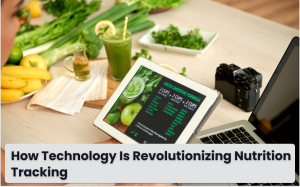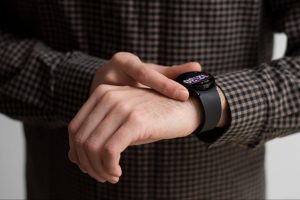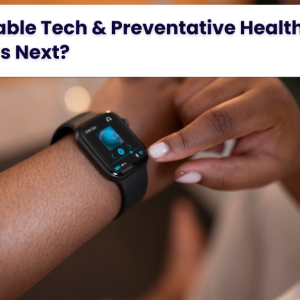
How Technology is Revolutionizing Nutrition Tracking
In an age where health and wellness are at the forefront of many people’s minds, technology has emerged as a powerful ally in nutrition tracking. Gone are the days of tedious calorie counting and food diaries filled with handwritten notes. With the advent of apps, wearable devices, and other digital tools, tracking nutrition has become more accessible, efficient, and accurate. Here’s how technology is transforming the landscape of nutrition tracking.

Smartphone Apps
The rise of smartphone applications has revolutionized how individuals track their food intake and nutritional habits. Popular apps like MyFitnessPal, Lose It!, and Cronometer provide users with extensive databases of food items, making it easy to log meals and monitor nutritional content.
Features and Benefits:
- Barcode Scanning: Many apps offer barcode scanning features that allow users to quickly log packaged foods by simply scanning their barcodes.
- Customizable Goals: Users can set personalized dietary goals based on their health objectives, such as weight loss, muscle gain, or maintaining a balanced diet.
- Nutrient Tracking: These apps break down nutritional information, providing insights into macronutrients (carbohydrates, proteins, and fats) and micronutrients (vitamins and minerals).

Wearable Devices
Wearable technology has become a staple in fitness and health monitoring. Devices like Fitbit, Apple Watch, and Garmin not only track physical activity but also offer nutrition tracking features.
Features and Benefits:
- Calorie Tracking: Some wearables allow users to log their meals directly from the device, making it easy to keep track of calorie intake throughout the day.
- Integration with Nutrition Apps: Many wearables sync with popular nutrition apps, providing a comprehensive view of both activity and nutrition data.
- Reminders and Notifications: Users can receive reminders to eat, stay hydrated, or log meals, helping them stay on track with their nutritional goals.

Artificial Intelligence and Machine Learning
AI and machine learning are playing increasingly significant roles in nutrition tracking by offering personalized recommendations and insights.
Features and Benefits:
- Personalized Meal Plans: AI-driven apps can analyze user preferences, dietary restrictions, and nutritional needs to create tailored meal plans.
- Smart Suggestions: These systems can suggest healthier food alternatives and portion sizes based on individual health data.
- Progress Analysis: AI can analyze dietary patterns and offer insights into improvements or changes needed to meet health goals.

Online Communities and Social Media
Technology has facilitated the creation of online communities centered around nutrition and wellness. Social media platforms, forums, and specialized websites enable users to share their experiences, recipes, and tips.
Features and Benefits:
- Support and Motivation: Users can find support from like-minded individuals on their nutrition journeys, sharing challenges and successes.
- Access to Expert Advice: Many nutritionists and health coaches utilize social media to provide tips, share recipes, and answer questions, making expert advice more accessible.
- Recipe Sharing: Platforms like Pinterest and Instagram are filled with healthy recipes and meal ideas, inspiring users to try new foods and cooking techniques.

Food Delivery and Meal Prep Services
Technology has transformed how people access nutritious meals through food delivery and meal prep services. Companies like HelloFresh, Blue Apron, and Snap Kitchen provide pre-portioned ingredients and recipes or fully prepared meals that cater to various dietary needs.
Features and Benefits:
- Convenience: These services save time and effort in meal planning and grocery shopping, making it easier to stick to healthy eating habits.
- Nutritional Information: Many meal delivery services provide detailed nutritional information, allowing users to track their intake more accurately.
- Dietary Customization: Users can choose meal plans based on their dietary preferences, including vegetarian, vegan, gluten-free, or low-carb options.

Blockchain Technology
Blockchain technology is emerging as a game changer in food tracking and transparency. By providing secure, real-time data about food sources, blockchain helps consumers make informed dietary choices.
Features and Benefits:
- Traceability: Consumers can trace the origin of their food, ensuring they make choices aligned with their values, such as sustainability and ethical sourcing.
- Nutritional Verification: Blockchain can verify nutritional claims, helping consumers choose foods that meet their dietary needs and preferences.
- Safety: Enhanced traceability can improve food safety by identifying sources of contamination quickly.

Virtual Nutrition Coaching
With the rise of telehealth, virtual nutrition coaching has become increasingly popular. Nutritionists and dietitians now offer remote consultations, allowing individuals to receive personalized guidance from the comfort of their homes.
Features and Benefits:
- Accessibility: Virtual coaching makes it easier for people to access nutritional guidance, regardless of their location.
- Customized Support: Coaches can provide tailored advice and support based on individual goals, preferences, and challenges.
- Flexible Scheduling: Clients can schedule sessions that fit their busy lives, making it more likely they’ll adhere to nutritional plans.
Summary
Revolutionizing Nutrition Tracking with Technology
Technology is reshaping how we track nutrition, making it more accessible and efficient. Smartphone apps, wearable devices, AI-driven insights, online communities, meal delivery services, blockchain technology, and virtual coaching are all tools that empower individuals to monitor their dietary habits effectively. These advancements not only simplify nutrition tracking but also provide personalized support and community engagement, ultimately leading to improved health outcomes.


